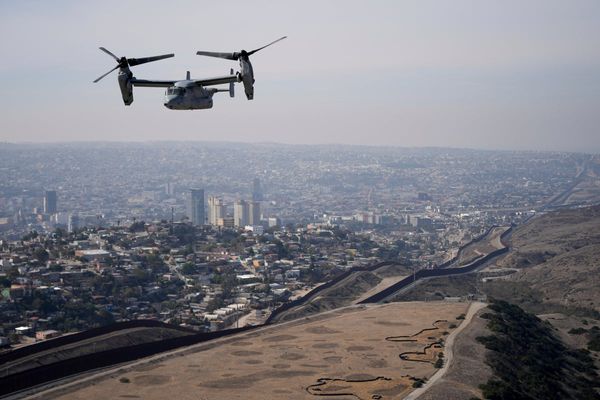The latest dispatch from the front line by The Independent’s world affairs editor, Sam Kiley, is a graphic illustration of how much the conflict in Ukraine has transformed modern warfare – and how this could work to the advantage of Kyiv, and the West more generally.
Not so long ago, soon after Vladimir Putin launched his “special military operation”, the latest stage in Russia’s attempt to expunge Ukraine from the map, Volodymyr Zelensky was leading delegations to Western capitals pleading for the traditional weapons of war – modern battle tanks, armoured personnel carriers, artillery, advanced fighter jets and so on.
All of these remain important, and there is still an obvious and urgent need to enhance Ukraine’s missile defence systems. However, first Kyiv and now Russia have developed drone and robot technologies to such a pitch that older rules have had to be rewritten. Relatively cheap “kamikaze” drones can knock out even heavily fortified troop positions miles behind the front line, while supply lines and armoured columns can be eliminated with ease by “FPV” (first-person view) operators far from the danger zone.
For a time, jamming systems threatened to make radio-controlled unmanned aerial vehicles obsolete, until the advent of ultra-thin fibre optic cables, which can run for miles and take instructions without fear of interference. These can only be stopped by infantry on the ground shooting them down: a near-impossible task.
The drones have a terrifying effect on soldiers, as do the new generation of “ground drones” – small, remotely guided tracked vehicles that can advance undetected on dugouts and shelters. It was even reported in recent weeks that a joint air and ground drone attack resulted in the surrender and capture of two Russian soldiers, escorted to their Ukrainian captors by the machines.
This new technology is already transforming warfare in the way that the aeroplane and the tank did in the First World War, and the early rockets and radar did in the Second. The strategic point is that, if Ukraine continues to gain the technological edge on the Russians in this field of unmanned combat, it could counter the Russians’ undisputed advance in sheer manpower.
This overwhelming use of an often badly equipped and poorly trained but massive Russian army would, in the end, exhaust any enemy, even if it had superior weaponry – the “meat grinder” doctrine of war. The other longstanding orthodoxy was that the vast size of Russia allowed it to keep munitions factories and bomber bases far away from the enemy, thus helping it defeat Napoleon and Hitler. Drones and long-range missiles tip the balance of power decisively, and give the Ukrainians much hope that they can sustain the war for at least two or three more years – a timescale that the prime minister of Poland, Donald Tusk, has suggested is in the mind of President Zelensky.
Yet, as Mr Tusk has also stressed in recent speeches and interviews, the West appears not to have properly understood either the reality of the Russian threat or the possibility that the Russians, forced by the Ukrainians to up their game, will develop drone and similar weaponry that will match what Nato has to offer. Mr Tusk declares himself “shocked” at the level of public complacency about the UK’s safety, and he is right to be alarmed. Nato itself is threatened, still, by the rise of American isolationism – it is not confined to the Maga movement – and the disruptive activities of the Kremlin-friendly Hungarian leader, Viktor Orban.
It is not entirely clear, in other words, that the UK and other European powers fully comprehend that what is happening in Ukraine is also “our war” – or that the Western military establishment is fully prepared for the new ways of fighting a war with Russia that may be inevitable. Even months of incursions by Russian planes into Nato airspace, proven cyber attacks, espionage, and social media manipulation to foment division don’t seem to have triggered much public alarm.
Today, because they have no choice, the Ukrainians are applying artificial intelligence to make their unmanned planes able to select targets autonomously, another technological breakthrough. Would that Nato’s complacent leaders and governments had even a fraction of their resourcefulness and determination.







